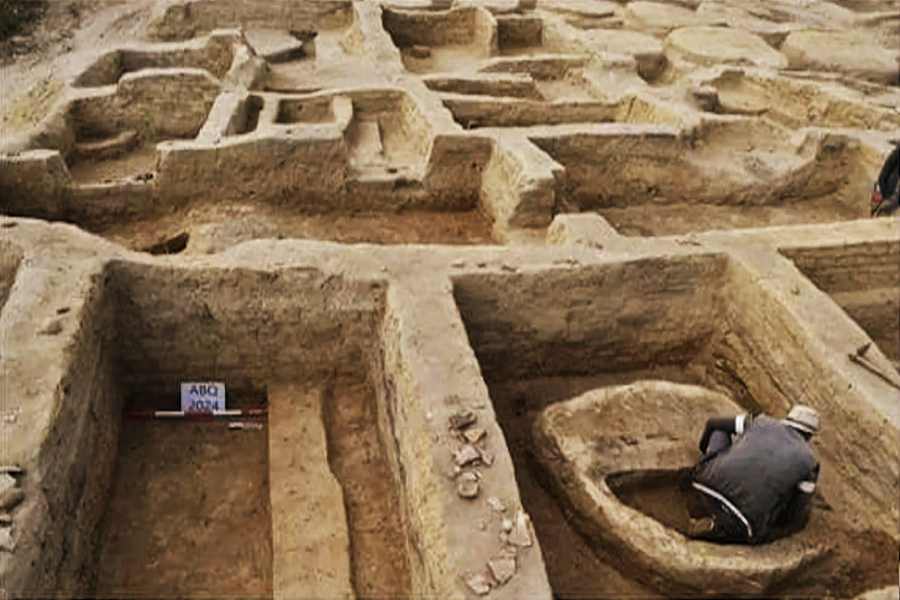Fri 27 September 2024:
Archaeologists have unearthed the ruins of a 3,000-year-old mudbrick fort in northwestern Egypt, near the eastern Mediterranean. The fort, dating back to the New Kingdom era (1550 BC – 1070 BC), served as a defensive stronghold against the elusive “sea peoples” who threatened ancient Egyptian kingdoms. This discovery sheds light on how Egypt defended its northern territories from these mysterious invaders.

Military Barracks and Provisions Found at the Site
The remains at the Tell Al-Abqain site include military barracks, storage rooms for food, weapons, and provisions, as well as personal items left behind by Egyptian soldiers stationed there. The soldiers defended Egypt from naval raids by the sea peoples, a group known for their role in the collapse of several ancient civilizations around 1200 BC. Although their origins remain unclear, these tribes launched several invasions along the Mediterranean coast, including northern Egypt.
__________________________________________________________________________

https://whatsapp.com/channel/0029VaAtNxX8fewmiFmN7N22
__________________________________________________________________________
Forts as Key to Egypt’s Defense
The discovery of this fort provides strong evidence of how military outposts played a crucial role in safeguarding Egypt from both the sea peoples and Libyan tribes. The fort’s architectural design, with buildings divided into two identical sections separated by a narrow passage, demonstrates the engineering skills of the ancient Egyptians. Storerooms, filled with daily provisions like food and pottery, catered to the soldiers’ needs.
Numerous artifacts were discovered, offering insights into the lives of the soldiers stationed at the fort. Among the finds were fish and animal bones, pottery ovens, and a long bronze sword inscribed with the cartouche of King Ramesses II. Additionally, a limestone block bearing hieroglyphs detailed the titles of Ramesses II, while another mentioned an official named “Bay.”
Symbolism in the Cow Burial
A burial site for cows was also uncovered, possibly symbolizing strength, prosperity, and abundance. This, along with other findings, helps researchers better understand the religious beliefs, daily life, and military activities of those who once lived in this ancient fort, protecting Egypt from outside threats.
SOURCE: INDEPENDENT PRESS AND NEWS AGENCIES
______________________________________________________________
FOLLOW INDEPENDENT PRESS:
WhatsApp CHANNEL
https://whatsapp.com/channel/0029VaAtNxX8fewmiFmN7N22
![]()
TWITTER (CLICK HERE)
https://twitter.com/IpIndependent
FACEBOOK (CLICK HERE)
https://web.facebook.com/ipindependent
YOUTUBE (CLICK HERE)
https://www.youtube.com/@ipindependent
Think your friends would be interested? Share this story!





